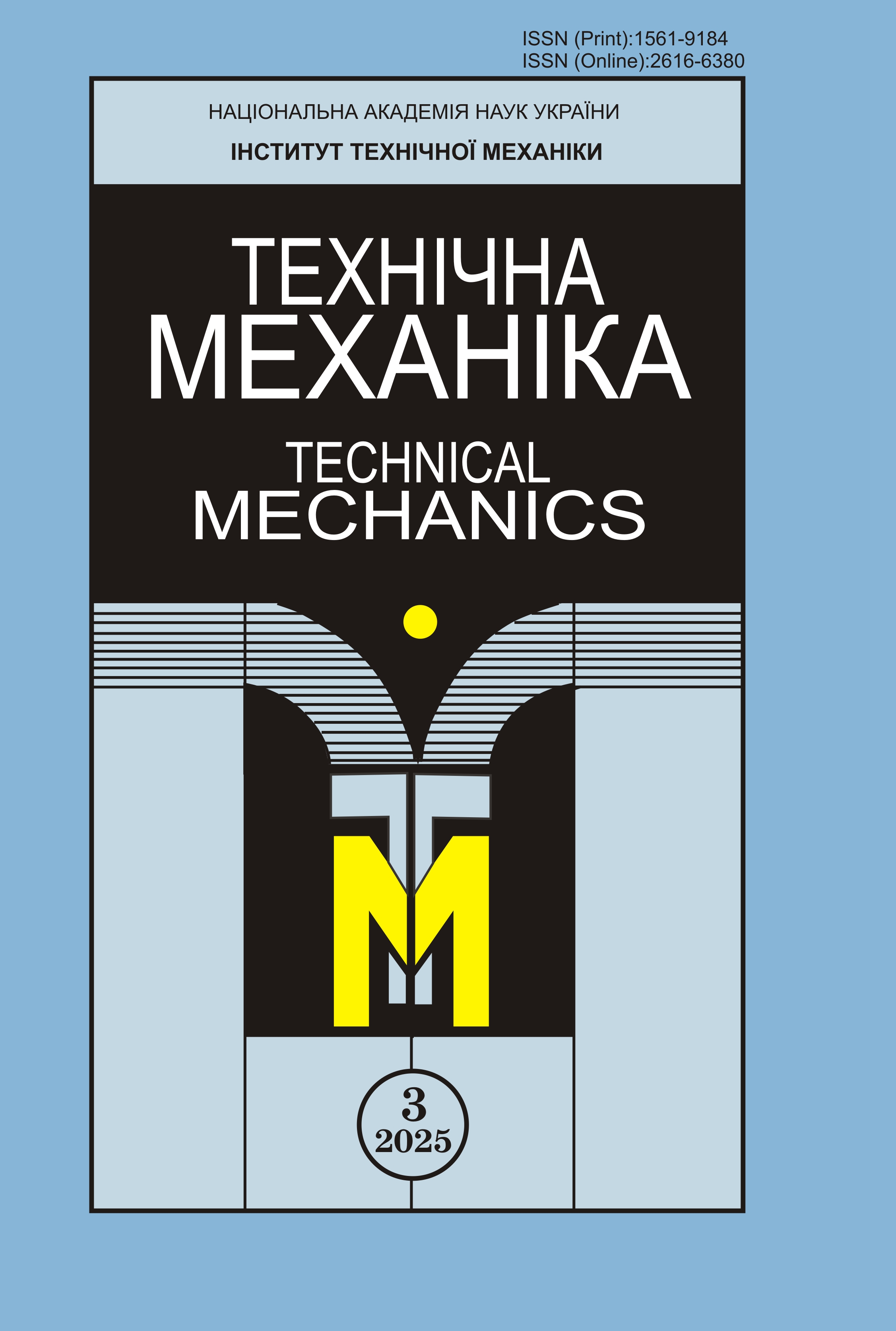METHOD FOR PROJECT RANKING BY QUANTITATIVE AND QUALITATIVE CRITERIA
Keywords:
quantitative and qualitative criteria, gestalt-vector, scaling criteria by preference, value function, model adequacy, project ranking.Abstract
DOI: https://doi.org/10.15407/itm2025.03.063
Determining the efficiency and priority of R&D projects has always been topical and important. It has been widely considered by numerous home and foreign researchers. However, the problem of project evaluation by preference in a multidimensional space of heterogeneous criteria has not been adequately addressed yet. The main goal of this paper is to present a method of project ranking by quantitative and qualitative criteria based on a consistent criteria scaling algorithm and to demonstrate its applicability. The consistent scaling algorithm (CSA) is a variant of the familiar algorithms of joint criteria scaling. As distinct from an independent scaling algorithm (ISA), which is used in the construction of an additive integral value function (IVF) in normalized form, the CSA is used in the construction of a canonical IVF. These algorithms are based on methods of multi-attribute utility theory, which use the operation of trading off one quality index against another. The classical CSA and ISA have a resolution equal to one, but they operate with qualitative criteria alone, thus considerably narrowing their field of application. To resolve this problem, the tradeoff operation of replacement in the CSA was modified, and a special procedure was proposed for joint scaling of heterogeneous criteria. Based thereon, stage-by-stage procedures were developed to construct local value functions both for qualitative and for quantitative criteria. As a result, the following problems were solved. A method was proposed to verify the preferential independence of qualitative criteria. By modifying the CSA, the problem of incomparability of heterogeneous criteria was overcome. An additive model of a canonical IVF was constructed for heterogeneous criteria, and several methods to verify the IVF for adequacy were proposed, including a constructive verification, which allows one to formally identify inadequate models. A method was developed to rank alternatives in a space of quantitative and qualitative criteria with a maximum resolution. This work used methods of decision-making theory, multi-attribute utility theory, and verbal analysis of solutions. The obtained results may be used in evaluating the efficiency of innovative technologies, in project competitions, and in R&D program formation, thus improving project management quality and allowing one to justify project advisability.
REFERENCES
1. Von Neumann J, Morgenstern O. Theory of Games and Economic Behavior. Translation from English into Russian, N. N. Vorob'ev (Ed.). Moscow: Nauka, 1974. 708 pp. (In Russian).
2. Keeney R. L., Raifa H. Decision Making with Multiple Objectives: Preferences and Value Tradeoffs. Moscow: Radio i Svyas, 1981. 560 pp. (In Russian).
3. Nikolaev V. I., Bruk V. M. Systems Engineering: Methods and Applications. Leningrad: Mashinostroyeniye, 1985. 199 pp. (In Russian).
4. Totsenko V. G. Methods and Systems of Decision Making Support. Algorithmic Aspect. Kyiv: Naukova Dumka, 2002. 381 pp. (In Russian).
5. Larichev O. I. Decision Making Theory and Methods and Chronicle of Events in Wonderlands. Moscow: Logos, 2006. 392 pp. (In Russian).
6. Petrovsky A. B. Decision Theory. Moscow: Academia, 2009. 400 pp. (In Russian).
7. Larichev O. I., Prokhorov A. S., Petrovsky A. B. et al. Experience in fundamental research planning on a competitive basis. Vestnik AN SSSR. 1989. No. 7. Pp. 51-61. (In Russian).
8. Pylypenko O. V., Pereverzev E. S., Marchenko V. T., Khorolskyi P. P., Pechenevskaya O. K. Effectiveness of R&D Projects and Programs. Dnipropetrovsk: Porogi, 2008. 509 pp. (In Russian).
9. Petrovsky A. B., Roizenzon G. V., Tykhonov I. P., Balyshev A. V. Multicriteria approach to research project effectiveness evaluation. Bulletin of the National Technical University "KhPI," Information and Modeling. 2009. No. 43. Pp. 138-148. (In Ukrainian).
10. Voronin A. Multi-criteria evaluation of space activity projects. International Journal Information Technologies & Knowledge. 2014. V. 8. Nо. 1. Рp. 14-21.
11. Beskorovainy V. V., Moskalenko A. S., Podolyaka K. E. Multifactor evaluation of large-scale object reengineering based on comparative identification. Elektrotekhnicheskiye i Kompyuternye Sistemy. 2016. No. 23 (99). Pp. 192-200. (In Russian). https://doi.org/10.15276/eltecs.23.99.2016.30
12. Kolpakov V. M. Theory and Practice of Managerial Decision Making. Kyiv: MAUP, 2004. 504 pp. (In Russian).
13. Manchuk V. M. Determination of the priority of R&D projects using a criteria scaling algorithm. Teh. Meh. 2020. No. 1. Pp. 91-105. (In Ukrainian). https://doi.org/10.15407/itm2020.01.091
14. Mamchuk V. M. Construction of a multiplicative-additive criteria convolution in the space of quantitative and qualitative indices to determine the priority of projects. Teh. Meh. 2022. No. 1. Pp. 77-90. (In Ukrainian). https://doi.org/10.15407/itm2022.01.077
15. Glotov V. A., Pavel'ev V. V. Vector Stratification. Moscow: Nauka, 1984. 94 pp. (In Russian).
16. Aivazyan S. A., Bukhshtaber V. M., Enyukov I. S., Meshalkin L. D. Applied Statistics. Classification and Dimension Reduction. Moscow: Finansy i Statistika, 1989. 607 pp. (In Russian).
17. Larichev O. I. Verbal Decision Analysis. Moscow: Nauka, 2006. 181 pp. (In Russian).
18. Petrovsky A. B., Roizenzon G. V. Interactive procedure for attribute space dimension reduction in imulti-criteria classification problems. Decision-making support. Proceedings of the Institute for Systems Analysis Russian Academy of Sciences. Moscow: Editorial URSS, 2008. V. 35. Pp. 43-53. (In Russian).
19. Kondruk N. E., Maliar M. M. Multi-Criteria Optimization of Linear Systems. Uzhрorod: Outdoor Shark, 2019. 76 pp. (In Ukrainian).
20. Petrov E. G., Shilo N. S. Procedure for assessing the adequacy of models of a decision-maker's individual preference pointwise identification. Radioelektronika i Informatika. 2003. No. 2. Pp. 97-103. (In Russian).
21. Larichev O. I., Moshkovich E. M. Qualitative Methods of Decision-Making. Verbal Decision Analysis. Moscow: Nauka, 1996. 208 pp. (In Russian).






